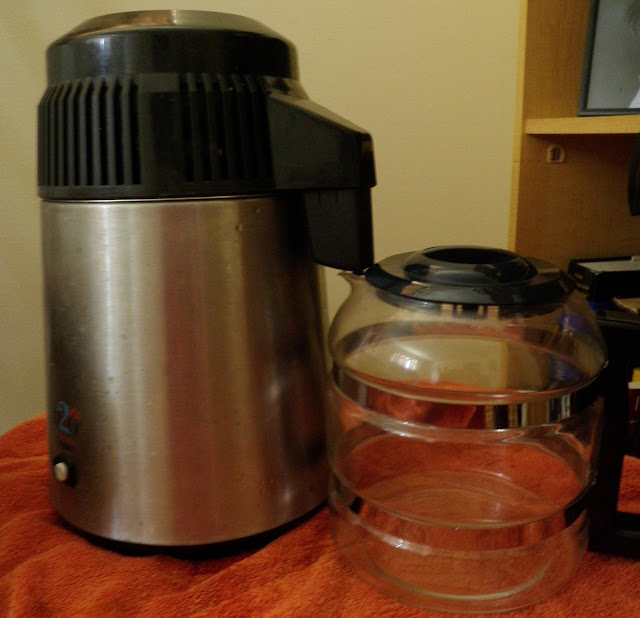How I went 2.5 years buying store-bought almond milk in a carton, I have no idea. So many other bloggers and even a good friend, Katie of Zenutrition make their own milk at home. Finally, last week as I was ordering a few books from Amazon, I remembered to purchase a nut milk bag, which is a fine mesh bag used to separate the milk from the almond pulp.
Almond Milk (4 cups)
4 c filtered water (mine is distilled/mineralized)
1 c organic almonds
1/2 tsp cinnamon (optional)
2 tsp honey (optional)
1 tsp vanilla (optional)
Directions:
Step 1: Cover almonds by 2 inches in filtered water overnight (8-12 hours). They will have plumped up by morning. Drain and rinse.
Step 2: Put 4 c filtered water and 1 cup almonds into a blender and blend for 2 minutes, until almond chunks are fine and milk is frothy. Mine even frothed up through the top of my blender!
 |
| During the blending.... |
 |
| Straining through the nut milk bag and funneling into the glass container. |
Step 4 (Optional): Take the strained milk and whizzz again if you're adding any flavorings like the cinnamon, honey and vanilla. You can stir it in, but this is the most efficient way of mixing honey in. You could also use liquid stevia and whatever else you'd like to flavor the milk. I'm sure I'll eventually get creative and try savory milk flavors.
 |
| Finished product: delicious, pure, almond milk! |
That's it! Due to not having the added gums like carrageenan and guar gum, this milk will separate and require a shake prior to each use. The container is from a local dairy producer, Caulders, and works perfectly. Glass is an ideal storage method, as it won't leach any toxins or plastics into your precious finished product.
 |
| BONUS: the leftover pulp, which is being dried out in the oven at 170 degrees for a couple hours...can be used for baking! |
However, the results are a rich, delicious, fresh milk that you know does not contain any additives or preservatives. It's super easy to make and doesn't require the waste of purchasing a tetrapack container that will end up in a landfill somewhere. Green it up and make your own! Enjoy.



















